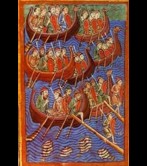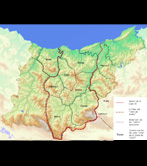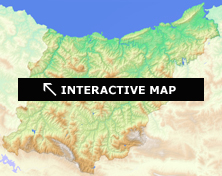The dark ages
Early medieval Gipuzkoa
The end of the Roman Empire coincided with Barbarian invasions on the Cantabrian coast in the Fifth century. Afterwards, the lack of written references to the region and the gaps in the archaeological strata between the Fifth and 10th century suggest that Gipuzkoa, if not actually depopulated, regressed significantly compared to the Roman days to being a subsistence agricultural economy. The old territorial organization did not persist and a new Gipuzkoa emerged, a still vaguely defined territory at the dawn of the first millennium, in the shadow of the kingdom of Pamplona, with a new organization of land and people based on the natural unit of the region: the valley.
Most interesting archaeological remains
In the absence of written records, archaeology still has much more to say about these “dark ages” and helps to explain, among other things, why people returned so often to the same settlements in places that had remained unpopulated for centuries. One day it will be possible to confirm, or correct, what is now only an hypothesis. Up to now, the aspect that has been most closely studied is religion, with the necropolises and the temples associated with them. There has also been research into fortifications and metalworking (haizeolak, non-hydraulic foundries) and references to habitat, as can be explored in the following interactive map of early medieval settlements.
An early medieval rural dwelling
An strategic tunnel: San Adrian





